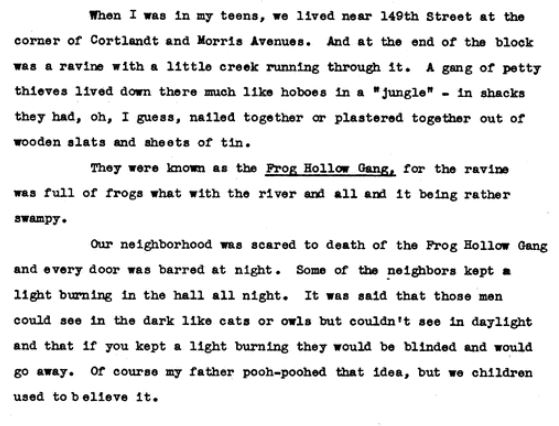New and Updated Genealogy Records Come in All Shapes and Sizes
New records at genealogy websites can come in all shapes and sizes. They may include new or updated indexes, digitized records, or improvements to the search function. It all adds up to new opportunities for you to find more information on your family history. Here’s the latest from some of the most popular genealogy records sites.
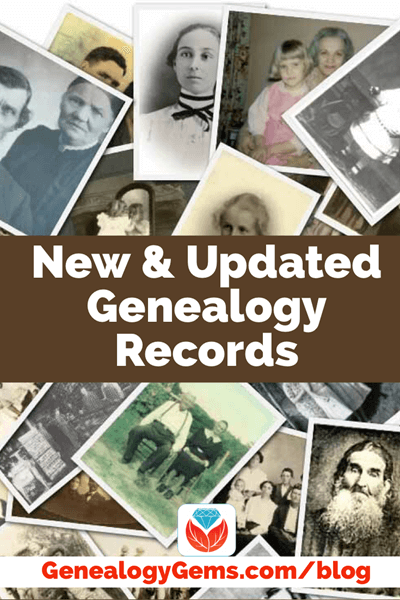
New at MyHeritage
Here’s the latest on new records from MyHeritage:
1801 Norway Census Index
“The 1801 census was carried out on Sunday, February 1, 1801, and is based on complete lists of individuals.
The census contains the names of farms (in rural areas), the full names of inhabitants, the familial ties between household members, their age, marital status, and occupation.
For married and previously married people, it was recorded how many times they had been married or widowed.
The age listed was the age on the next birthday.
The names of smallholdings are typically not included. People were registered in the regions where they belonged. Those who were absent, e.g. sailors, should be listed in their hometowns.
The department of statistics of the Exchequer in Copenhagen prepared the census and processed its results. In the rural districts, the census was carried out by parsons with the assistance of precentors and school teachers. In the towns the efforts were supervised by the Town Administration and carried out by the Subdivision Heads of each conscription district. The town lists are arranged by building numbers. This collection is provided through cooperation with the National Archives of Norway.”
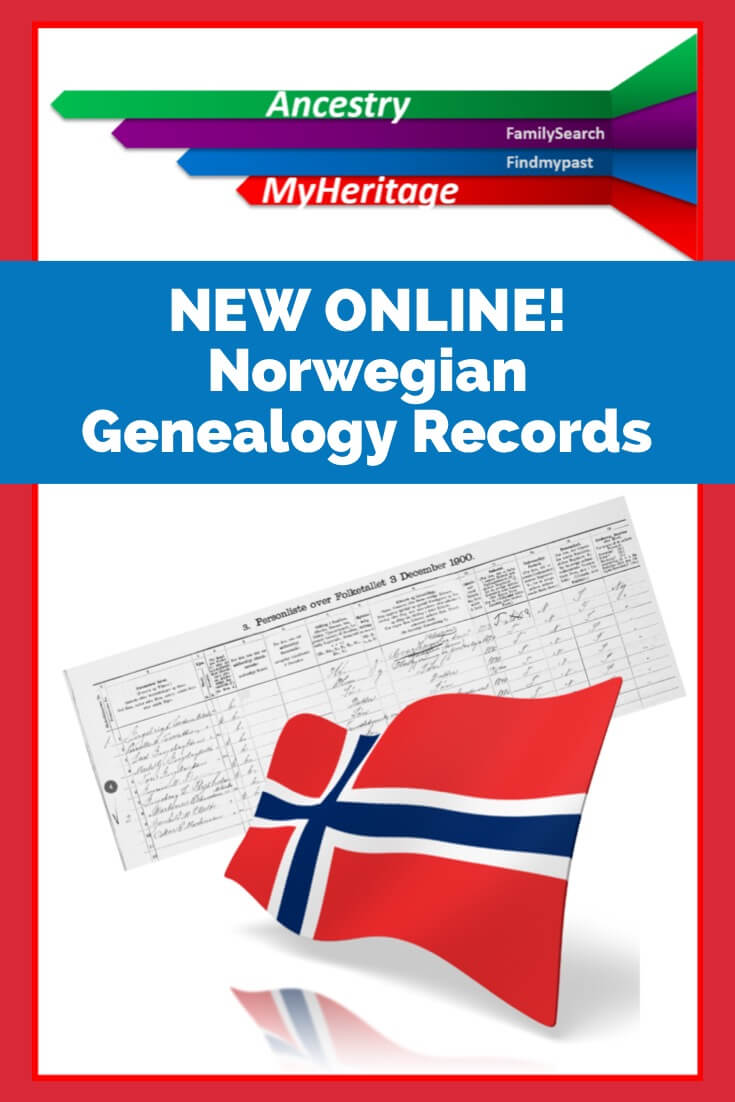
1865 Norway Census Index
“This collection of over 1.68 million records is the first national census to list a place of birth for all persons recorded. This census contains the person’s name, residence, status in the family, occupation, sex, marital status, age, place of birth, religion if not a member of the state church, and other miscellaneous information.
Censuses have been taken by the Norwegian government and by ecclesiastical officials for population studies and taxation purposes.
Census and census-like records are found from the 1500s to 2000. After 1900, a national census was taken every 10 years until 2000. Access to the national census records is restricted for a period of 100 years after the date of enumeration.
Generally, you will find more detailed family information in more recent censuses.
Some known deficiencies in the 1865 original census material include records from Gol parish in Buskerud county, Holtålen Parish in Sør-Trøndelag county, Bjerke parish in the Nannestad dioceses in Akershus county, and at least 106 special lists in Kristiania (Old name for Oslo). This collection is provided through cooperation with the National Archives of Norway.”
United Kingdom, War Memorials, 1914–1949 Index
“This free collection of 1.1 million records provides details on soldiers from the United Kingdom that died during the wars in the early to mid 20th century.
During the first World War, alone, there was an average of over 450 British casualties per day. Information listed on these records may include: name, date of death or burial, burial place, and age at death. These records might also include rank, service and unit of the military as well as any honors earned during service.
The records primarily consist of soldiers from the First and Second World Wars with a few records from different wars. The number of British casualties was smaller in wars following World War II, and the number of records from other conflicts is consequently low.
This collection content is copyright of the Imperial War Museums and the index is provided by MyHeritage free of charge as a beneficial service to the genealogy community.”
Estonia, Gravestones, 1812–2019 Index
“This collection includes information from Estonia cemeteries and consists of records from 1812-2019. These include the name of the deceased, birth date when available, death date when available, date of burial when available, and the name of the cemetery.
Cemeteries can help you trace the burial and or death place of an Estonian relative. Cemetery records may also help identify ancestors when access to church records and census records is limited, or the death was not recorded in other records.”
North Carolina, Mecklenburg County Birth Index, 1913–2019 Index
“This collection is an index of birth records from Mecklenburg County, North Carolina. The records may contain the first name, middle name, last name, gender, and date of birth of the individual. Mecklenburg County is the largest county in North Carolina by population, and its county seat is Charlotte.”
North Carolina, Mecklenburg County Marriage Index, 1884–2019 Index
“This free collection is an index of marriage records from Mecklenburg County, North Carolina. The records may contain the following searchable information: first name, middle name, and last name of the bride and groom, and the marriage date of the couple. Records may also contain the marriage license number and the date of the application.
Mecklenburg County is the largest county in North Carolina by population, and its county seat is Charlotte.
Most records in this collection are from the 20th century or later, with just three percent from before the year 1900. However, there is a select amount of records dated from before 1884, with approximately one percent of the collection falling under this category.”
North Carolina, Mecklenburg County Death Index, 1916–2019 Index
“This free collection is an index of death records from Mecklenburg County, North Carolina. The records may contain the following searchable information: first name, middle name, last name, gender, and death date of the individual. Records may also contain the certificate number for the death. Mecklenburg County is the largest county in North Carolina by population, and its county seat is Charlotte.
In some cases, the gender is given as unknown along with a missing given name. This usually means the record is for a still-born baby. All records in this collection are from the 20th century or later. However, there is a select amount of records dated before 1916, with the earliest from 1908.”
Pennsylvania, Lawrence County Index of Obituaries, 1871–2016 Index
“This collection includes an index of obituaries and death records from Lawrence County Pennsylvania for the years 1871-2016. A record may include the first and last name of the deceased, death date, date of death announcement, name of spouse, name of parent(s), and the name of the newspaper that published the information.
Obituaries can be a good source of information about a person and may also include information about the deceased’s family members. Often an obituary will include information such as the birth date, marriage date, children, occupation, education, and the location of living family members at the time the obituary was written.”
Pennsylvania, Lawrence County Index of Marriage Announcement, 1858–2006 Index
“This collection includes marriage announcements from Lawrence County, Pennsylvania for the years 1858-2006. Records may include the first and last name of the bride and groom, the names of parent(s), the title of the newspaper that published the announcement, the page on which the announcement is located, the date of the marriage announcement, and the year of the marriage.
Marriage records are a valuable source of information. Marriage records found in newspapers are not limited to a specific form, like most government marriage records, therefore newspapers may contain details about a marriage not found elsewhere, such as names of siblings or other relatives.
Newspapers can report marriages of people who no longer live in the area but who still have friends or family there.”
Chile, Electoral Rolls, 2013 Index
“This collection of over 12 million records contains information about Chilean voters during the November 17, 2013 elections. Records include the names of voters and the location of the vote. The collection also includes records about canceled voters, mostly because of the death of the voter, and disqualified voters.
Search these collections at MyHeritage here.
All of the above newly updated collections are now available through MyHeritage SuperSearch™. Searching these records is free, but a Data or Complete subscription is required to view the records, save them to your family tree, and access Record Matches. Our Record Matching technology will get to work and notify you automatically if any of these records mention a member of your family tree. You’ll then have the ability to review the record and decide if you’d like to add the new information to your family tree.”
New Newspaper Content at GenealogyBank
GenealogyBank is one of the leading providers of digitized newspapers, and they’ve recently added new content for 152 newspaper titles from across 35 states including:
- Alabama
- Alaska
- Arizona
- Arkansas
- California
- Delaware
- District of Columbia
- Florida
- Georgia
- Idaho
- Illinois
- Kansas
- Kentucky
- Louisiana
- Maine
- Minnesota
- Mississippi
- Missouri
- Nebraska
- New York
- North Carolina
- North Dakota
- Ohio
- Pennsylvania
- Puerto Rico
- South Carolina
- South Dakota
- Texas
- Virginia
- Washington
- West Virginia
- Wisconsin
Here’s a short video about another historic newspaper resource (click for sound):
More New Newspaper Content at the British Newspaper Archive
One of my favorite websites, the British Newspaper Archive celebrated its 8th birthday this week (the Archive was launched on 29th November 2011) and also reached the milestone of 35 million searchable pages. Here’s ta brief overview of the 128,362 new pages recently added.
New title added:
- Sporting Gazette
Updated:
- Elgin Courant, and Morayshire Advertiser (Scotland, 1863-1905)
- The Reading Evening Post
- Wells Journal and the Bristol Times and Mirror (West country area)
Search or start a free trial here.
New at Ancestry
Here’s the latest from Ancestry:
Finland, Pre-Confirmation Books, 1670-1918
Pre-Confirmation Books
“Pre-Confirmation books, otherwise known as Childrens’ Books, were used to record the names of children who had not yet been confirmed into the Lutheran church. These records are extremely valuable as they record family groups and provide dates of birth and sometimes a place of birth as well. Death dates may also occasionally be included. Once the child became eligible for Communion, they were then recorded in the Communion books.
Pre-Confirmation books were organised by villages and then by farm and household.
This Collection
Users may find the following details for individuals found in the communion books (where available):
- Name
- Gender
- Relation to Head
- Birth Date
- Birth Place
- Burial Date
- Death Date
- Residence”
UPDATED: U.S., Social Security Death Index, 1935-2014
On November 14, 2019 changes were made to improve the performance of this collection, so if you’ve ever searched it and not found what you were looking for, it might be worth another try. Note: no new records were added.
Washington, Marriage Records, 1854-2013
On May 20 Ancestry added 1,388,625 new records to this collection.
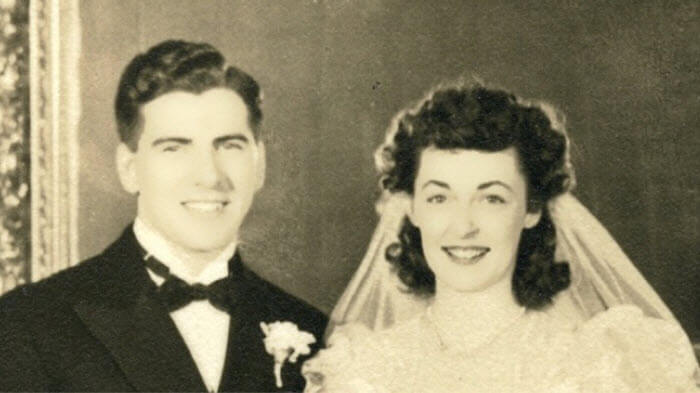
Marriage Records
“This database contains both images of and indexes extracted from various records of marriages in Washington.
Marriage records can offer a wide range of details. While the indexes in this database may provide the basic facts surrounding a wedding—bride, groom, date, and place—images of marriage certificates may also include additional information such as
- addresses
- ages
- race
- birthplaces
- occupations
- marital status (single, divorced)
- whether a first marriage
- fathers’ names and birthplaces
- mothers’ names, maiden names, and birthplaces
This database does not contain an image for every document included in the index.”
U.S. WWII Draft Cards Young Men, 1940-1947
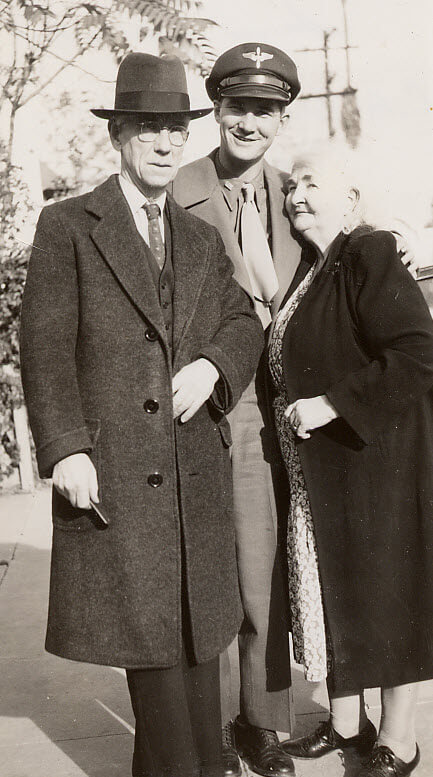
Military Records
On Nov 7 Ancestry added 4,651,830 new records from the following states to the U.S. WWII Draft Cards Young Men, 1940-1947 collection:
- New Jersey
- New York
- North Dakota
- Vermont
- Illinois
- Kentucky
- New Hampshire
Search the updated collection here.
What Did You Find in the New Online Records?
We’ve got our fingers crossed that you are able to unearth some new genealogy gems from these new updates. If you do, please leave a comment and let us know, and then share this post with your friends.



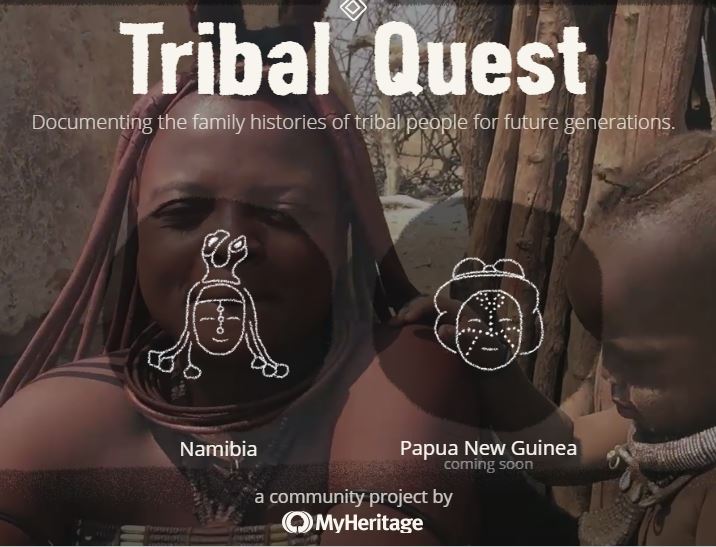 its Tribal Quest initiative.
its Tribal Quest initiative.